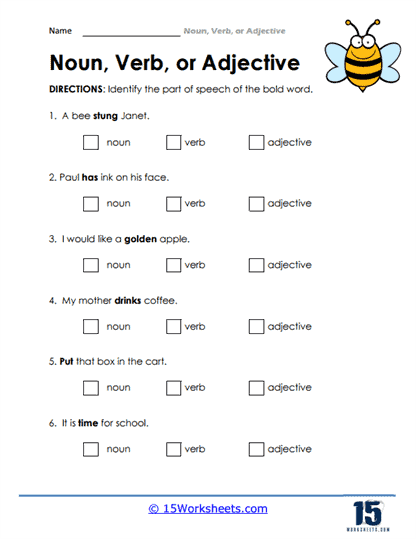
Mastering the Building Blocks of Language: The Indispensable Adjectives vs. Verbs Worksheet
In the intricate tapestry of the English language, words serve distinct roles, each contributing to the clarity, nuance, and impact of our communication. Among the most fundamental yet frequently confused parts of speech are adjectives and verbs. While both are indispensable, their functions are fundamentally different, leading to common errors for learners and native speakers alike. This article will delve into the nuances of these two word classes and highlight the invaluable role of an adjectives vs verbs worksheet in mastering them, providing a comprehensive guide to understanding their differences, the benefits of targeted practice, and how to create or utilize such a powerful educational tool.
The Core Confusion: Why Adjectives and Verbs Are Often Muddled
At first glance, the distinction between an adjective and a verb might seem straightforward. Verbs express actions or states of being, while adjectives describe nouns. However, the English language is rich with words that can shift their function based on context, leading to genuine confusion. For instance, "run" is typically a verb (e.g., "He runs fast"), but it can also be a noun (e.g., "She went for a run"). Similarly, a word like "fast" is primarily an adjective (e.g., "a fast car"), but it can also function as an adverb (e.g., "He drives fast"). This contextual fluidity underscores the necessity of precise understanding, which an adjectives vs verbs worksheet is perfectly designed to cultivate.

Adjectives: The Descriptors of Our World

Adjectives are the color and texture of our language. Their primary role is to modify or describe nouns and pronouns, providing more information about their qualities, quantities, or characteristics. They answer questions like:
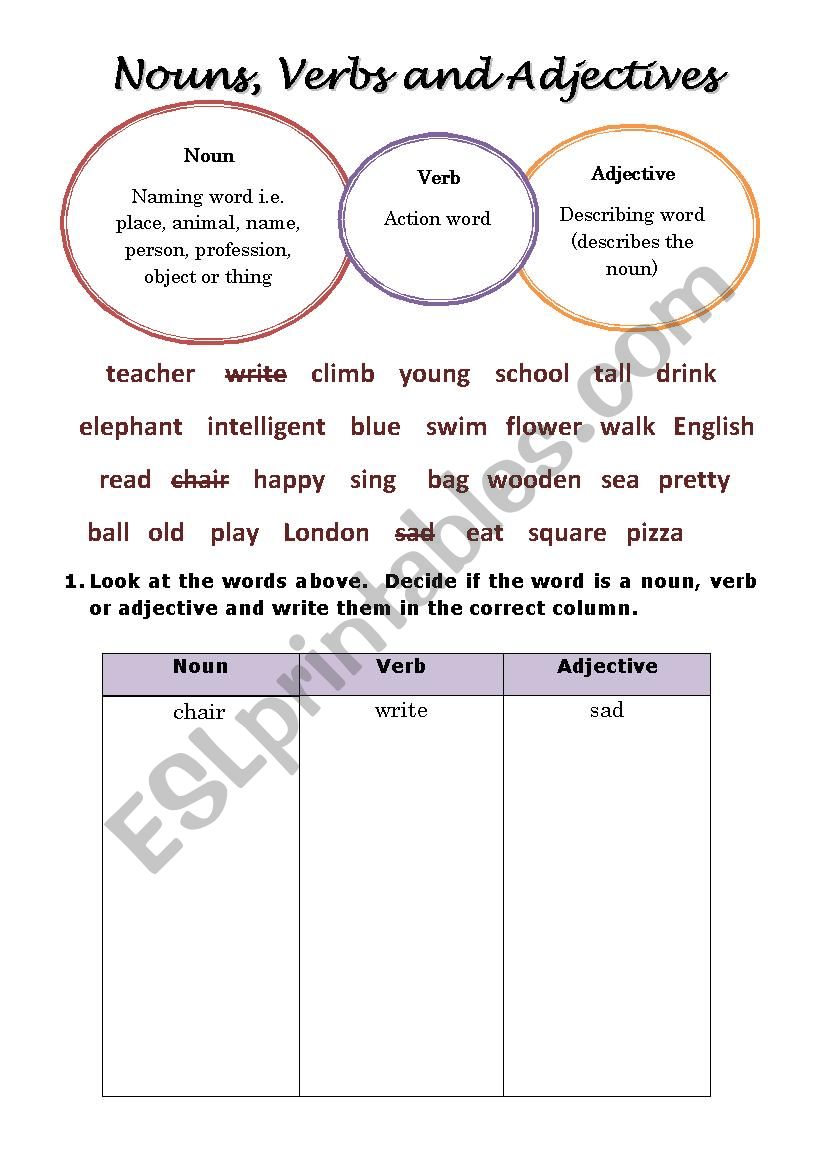
- Which one? (e.g., that car, the first attempt)
- What kind? (e.g., beautiful flower, sour lemon)
- How many/much? (e.g., three apples, much effort)
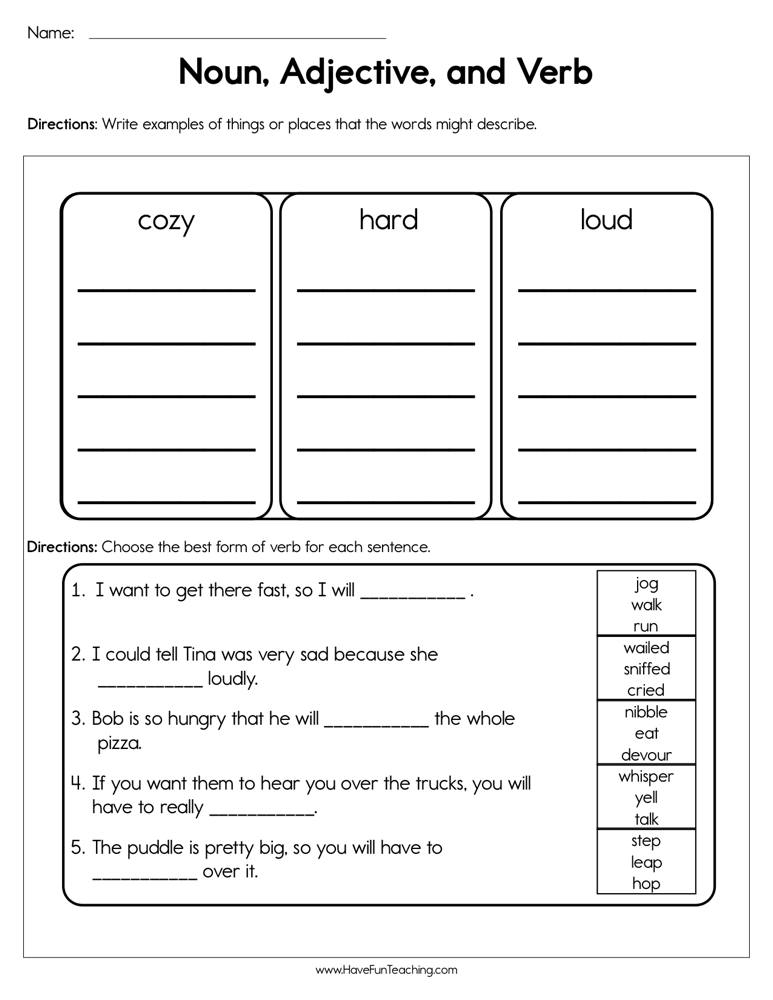
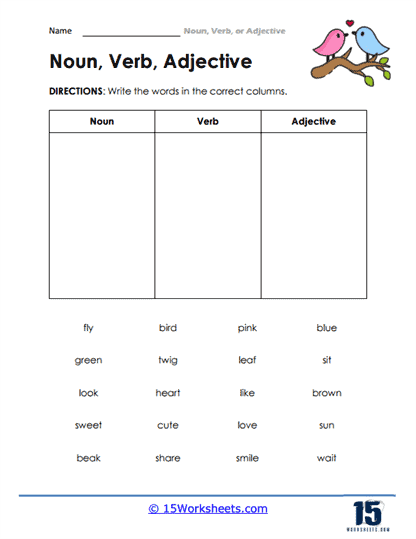
Key Characteristics of Adjectives:
- Placement: Adjectives typically appear before the noun they modify (attributive position: red car) or after a linking verb, describing the subject (predicative position: The car is red).
- Degrees of Comparison: Most adjectives can be used in comparative (e.g., taller, more beautiful) and superlative (e.g., tallest, most beautiful) forms.
- No Tense: Unlike verbs, adjectives do not change their form to indicate tense.
- Examples: happy, sad, big, small, old, new, blue, quick, delicious, important, intelligent, many, few.


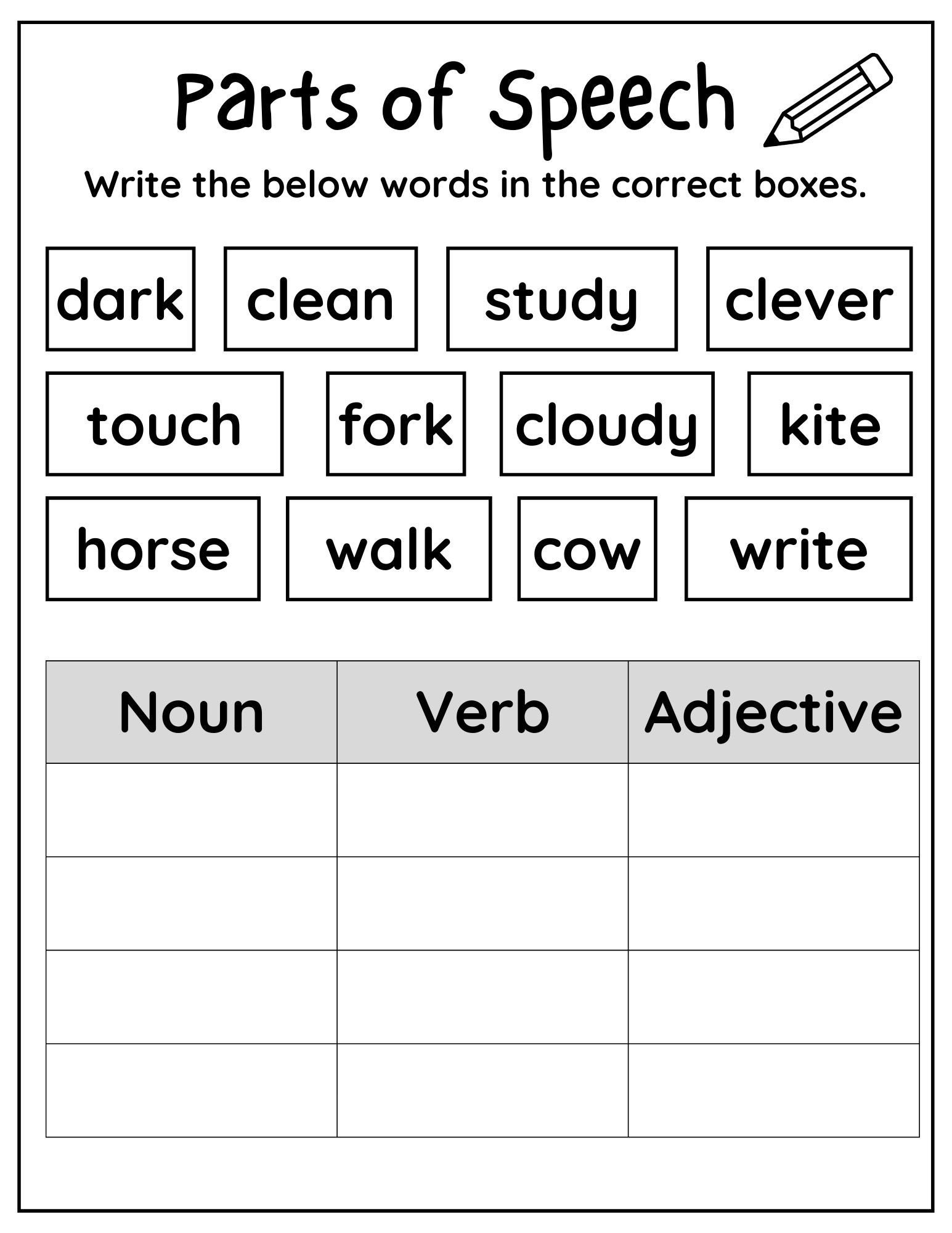
Common Pitfalls with Adjectives:

- Confusion with Adverbs: Adverbs modify verbs, adjectives, or other adverbs, often ending in -ly (e.g., quickly, happily). It’s crucial to remember that adjectives describe nouns, while adverbs describe actions or other descriptions.
- Overuse: Too many adjectives can make writing clunky and less impactful.
- Incorrect Order: English has a specific, though often intuitive, order for multiple adjectives (e.g., opinion, size, age, shape, color, origin, material, purpose).
Verbs: The Engines of Action and Being
Verbs are the lifeblood of a sentence; they are what make it move. They express actions, occurrences, or states of being. Without a verb, a sentence cannot exist.
Key Characteristics of Verbs:
- Action Verbs: Show physical or mental actions (e.g., run, jump, think, believe).
- Linking Verbs: Connect the subject of a sentence to a noun or adjective that describes or renames it (e.g., is, am, are, was, were, become, seem, feel, look, taste).
- Helping (Auxiliary) Verbs: Work with main verbs to form different tenses, moods, or voices (e.g., has, have, had, do, does, did, can, could, will, would, shall, should, may, might, must).
- Tense: Verbs change their form to indicate when an action occurs (past, present, future).
- Subject-Verb Agreement: Verbs must agree in number with their subjects (e.g., "He runs," "They run").
Common Pitfalls with Verbs:
- Irregular Verbs: Many verbs do not follow regular patterns for past tense and past participle forms (e.g., go-went-gone, eat-ate-eaten).
- Subject-Verb Agreement Errors: Mismatches between singular/plural subjects and verbs.
- Tense Consistency: Shifting tenses unnecessarily within a piece of writing.
- Confusion with Nouns: Words like "walk," "swim," or "run" can be both verbs and nouns depending on context.
The Power of the Adjectives vs. Verbs Worksheet
Given the potential for confusion and the critical roles these parts of speech play, a targeted educational tool is essential. Enter the adjectives vs verbs worksheet – a specifically designed resource that helps learners differentiate between these two word classes through focused, repetitive practice. This type of worksheet is invaluable for several reasons:
- Direct Comparison: It forces learners to consider words in the context of both potential roles, sharpening their analytical skills.
- Reinforced Learning: Repeated exposure and application solidify understanding of definitions and functions.
- Error Identification: It helps learners spot and correct their own mistakes, fostering self-correction.
- Contextual Understanding: Exercises often require learners to analyze sentences, understanding how a word’s position and function determine its classification.
Key Components of an Effective Adjectives vs. Verbs Worksheet
A well-designed adjectives vs verbs worksheet should incorporate a variety of exercise types to cater to different learning styles and reinforce understanding from multiple angles:
-
Identification Exercises:
- Underline/Circle: Learners read sentences and are asked to underline all adjectives and circle all verbs. This is a foundational exercise for recognition.
- Color-Coding: Assigning different colors to adjectives and verbs (e.g., blue for adjectives, red for verbs) can be visually helpful, especially for younger learners.
- Word Sort: Provide a list of words and ask learners to categorize them into "Adjective" or "Verb" columns. Include words that can be both (e.g., "run," "fast") to encourage critical thinking.
-
Sentence Completion/Fill-in-the-Blanks:
- Provide sentences with blanks and a word bank containing both adjectives and verbs. Learners must choose the correct word type to fit the sentence’s grammatical structure and meaning.
- Example: The cat quickly. (Word bank: sleeps, fluffy)
-
Sentence Construction:
- Using Given Words: Ask learners to write sentences using specific adjectives and verbs. This encourages creative application.
- Transforming Sentences: Give a simple sentence and ask learners to add an adjective or change the verb tense.
-
Error Correction:
- Present sentences where an adjective is used as a verb, or vice-versa, or where the wrong form is used. Learners identify and correct the error.
- Example: He sings beautiful. (Correction: He sings beautifully.) – While this example involves an adverb, it teaches the distinction of what modifies a verb. A better example for direct adjective/verb confusion might be: "The run boy." (Correction: The running boy or The boy runs.)
-
Contextual Application/Passage Analysis:
- Provide a short paragraph or story. Learners identify and list all adjectives and verbs found within the text. This helps them see these parts of speech in a more natural, extended context.
-
Creative Writing Prompts:
- Challenge learners to write a short paragraph describing an object or event, explicitly asking them to use a certain number of adjectives and verbs. This integrates the learning into a practical communication task.
Benefits of Consistent Adjectives vs. Verbs Worksheet Practice
Regular engagement with an adjectives vs verbs worksheet ensures that learners develop a strong grammatical foundation, leading to a multitude of benefits:
- Clarity and Differentiation: It solidifies the understanding that while both word types are crucial, they perform entirely different functions.
- Improved Sentence Structure: A clear grasp of adjectives and verbs helps learners construct grammatically correct and coherent sentences. They learn where to place descriptors and how to ensure proper subject-verb agreement.
- Enhanced Vocabulary Usage: Understanding the role of adjectives allows for more vivid and precise descriptions, while recognizing verb types broadens the ability to express actions and states accurately.
- Foundation for Advanced Grammar: Distinguishing between adjectives and verbs is a prerequisite for understanding more complex grammatical concepts like clauses, phrases, and sentence diagramming.
- Better Communication: Clear, grammatically sound writing and speaking improve overall communication effectiveness, both in academic settings and in everyday life.
- Confidence Building: Mastering these fundamental parts of speech builds confidence in language abilities, encouraging further exploration and learning.
Tips for Educators and Learners
- Start Simple: Begin with basic identification and gradually introduce more complex exercises.
- Provide Clear Definitions and Examples: Before starting the worksheet, review the definitions and provide multiple clear examples for both adjectives and verbs.
- Use Real-World Context: Connect exercises to topics that are relevant and interesting to the learners.
- Encourage Discussion: Have learners explain their choices. Why is a particular word an adjective here? Why is another a verb?
- Offer Constructive Feedback: Go over the worksheets together, correcting mistakes and explaining the reasoning behind the correct answers.
- Make it Fun: Incorporate games, interactive activities, or competitive elements to keep learners engaged.
- Regular Practice: Consistency is key. Short, regular sessions are more effective than infrequent, long ones.
Conclusion
The journey to grammatical mastery, particularly in distinguishing between adjectives and verbs, is significantly aided by a well-structured adjectives vs verbs worksheet. These worksheets are not merely drills; they are fundamental tools that empower learners to dissect sentences, understand the precise function of words, and ultimately, communicate with greater clarity, precision, and impact. By consistently engaging with these targeted exercises, students build a robust foundation in grammar that will serve them well throughout their academic and professional lives, transforming potential confusion into confident command of the English language.
